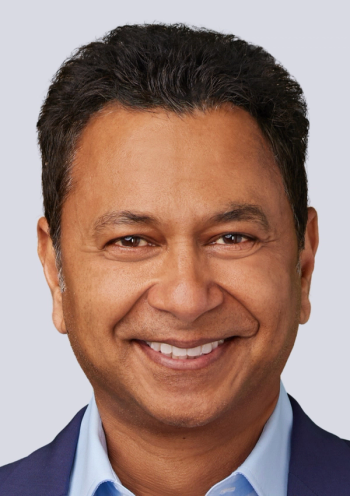
- MHE April 2023
- Volume 33
- Issue 4
How Healthcare’s Digital Transformation Could Help Fix the Labor Shortage
Technology is often focused on administrative tasks. Some healthcare leaders say it also can help fix the sector’s labor shortage by diving into patient care.
When the consultancy BDO surveyed middle-market healthcare chief financial officers recently, the results showed that they were worried about what pretty much what you wouldexpect: supply-chain disruptions, regulatory uncertainty, natural disasters. And just as troubling for those C-suite executives was a shortage of available talent. Seventy-one percent of respondents said labor shortages were a top threat to the healthcare industry.
There’s cause to be concerned. The federal government’s Health Resources and Services Administration projects that by 2025 the United States will be short almost 79,000 registered nurses and more than 57,000 physicians. Those projections are modeled on historical patterns of attrition that may not hold true in the era of “quiet quitting,” burnout and lingering effects of the peak years of the COVID-19 pandemic.
Well-chronicled consequences of the pandemic have been the shift to telehealth and a growing array of ways to deliver care remotely. It turns out that the same digital transformation that met the challenge of the pandemic also may help executives scrambling to find physicians and nurses to staff their organizations.
David Francis, M.H.A., managing director of BDO’s healthcare management advisory services practice, tells Managed Healthcare Executive that digital tools can streamline processes to ultimately help alleviate staffing challenges and shortages. “There’s an opportunity to reduce your expenses, improve your patient throughput, and drive revenue so that you have a holistic impact on your bottom line,” he says.
Patient DIY
One way to do that, Francis says, is by taking advantage of tools that cut down on administrative work. For instance, some of the work typically done by staff members can now be done by patients themselves. “Things like scheduling their own appointments or looking at pricing information for the services that they’re going to take on, and other different areas,” he says. “So that will lead to a reduction in the reliance on the same staffing model.”
Shifting work to patients? How is that going to go over? Francis says many patients prefer the change if the navigation isintuitive and functions well. For example, BDO’s data suggest that when patients are able to schedule physician appointments themselves on some kind of interface, rather than having to call to make an appointment, they do so two days sooner on average. “Patients don’t like to be on the phone,” Francis says. “They’re afraid of being bounced around and dropped.”
Therese A. Fitzpatrick, Ph.D., a senior vice president at Kaufman Hall, says there are also ways to rethink and realign the duties of healthcare providers in order to better leverage digital health tools. One example, she says, is the concept of virtual nursing. She noted that the nursing workforce is aging, and many workers nearing retirement age might be willing to work longer if they did not face the physical demands associated with hands-on patient care.
“So how do we keep that brainpowerin the profession, but in a way that that may not be working 12-hour shifts?” she asks. One answer is virtual nursing, whereby nurses work in a centralized location rather than traveling from patient room to patient room.
“They provide care that does not require hands-on (work) from the staff on the unit,” Fitzpatrick says. Coaching and mentoring can be delivered the same way.
Nurses working remotely also can handle medication reconciliation, review medical records review and monitor lab tests, she says, and patients to some extent can also be “remotely nursed” at home to some extent. Currently, most virtual nurse setups in U.S. hospitals require nurses to work at the hospital. Eventually, Fitzpatrick says, some of this kind of work could be done by nurses working from home.
VR for teaching
In addition to realigning staff work, Fitzpatrick say there is a need to train individuals for new or expanded roles more efficiently. Facilitating remote learning could allow colleges and universities to expand their student populations. She has in mind something more than classes held via Zoom. Virtual reality (VR) simulations can be used for everything from practicing interactions with patients to helping with leadership development. “There are some interesting applications for virtual reality that are actually starting to bubble up in the patient care space as well,” she says.
Francis says a key component of solving the workforce problem is for health systems to look internally to fix staffing shortages. As digital tools make it easier to simplify or combine certain lower-level tasks, it is essential, he says, for healthcare organizations to find ways to retrain staff to take on harder-to-fill roles.
Reluctant adopters
Digital transformation of healthcare may present any number of opportunities to improve healthcare and alleviate the labor shortage. But for a whole set of reasons — regulations, sunk assets, tradition, inherent complexity— healthcare leaders can be slow to embrace change. In BDO’s survey, for instance, just 34% of healthcare chief financial officers said they are pursuing digital transformation this year. But Francis says the perfect storm of the pandemic, inflation and external international factors put healthcare leaders in a circumstance where they may be more open to change.
“Take the old adage, ‘You have to spend money to make money,’” he says. “But the fact is, you’re spending money for solid investments that will have an impact on patient care.”
New sweeteners
In addition to adopting digital tools, many healthcare organizations are hoping to address the talent shortage the old-fashioned way: by boosting compensation. Brad Squibb, a vice president at job search engine Adzuna, says that may involve more than just salaries. Healthcare organizations are greatly expanding the number — and type — of benefits they offerto workers.
For instance, in 2020, approximately 19,000 nursing and healthcare jobs listed on Adzuna advertised tuition reimbursement. Last year, that number soared to 149,000. Child care support, gym memberships, mental health days and coverage of fertility treatments have become more common as healthcare employers try to lure applicants, Squibb says.
Squibb notes that Adzuna has seen a 255% increase in searches for remote roles over the past year. Although many healthcare jobs cannot be done remotely, Squibb says health systems are finding other ways to offer flexibility, such as float nurse pools in which nurses’ hours and assignments shift based on demand. (The drawback can be unpredictability.)
“Given the sector is operating 24/7, there should be plenty of opportunity for flexibility in shift patterns if managers are willing to put in the effort,” Squibb comments. “Reduced hours, compressed work patterns and four-day weeks all have their place.”
Jared Kaltwasser, a freelance writer in Iowa, is a regular contributor to Managed Healthcare Executive®.
Articles in this issue
over 2 years ago
Is Medicare Advantage a Disadvantage For Patients With Cancer?over 2 years ago
Medicaid Enrollment Crosscurrentsover 2 years ago
For Fraudsters, COVID-19 Is the Sound of Opportunity Knockingover 2 years ago
CVS Health Keeps Getting Bigger and Biggerover 2 years ago
The Lonely Have Plenty of CompanyNewsletter
Get the latest industry news, event updates, and more from Managed healthcare Executive.

















































